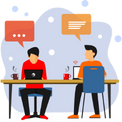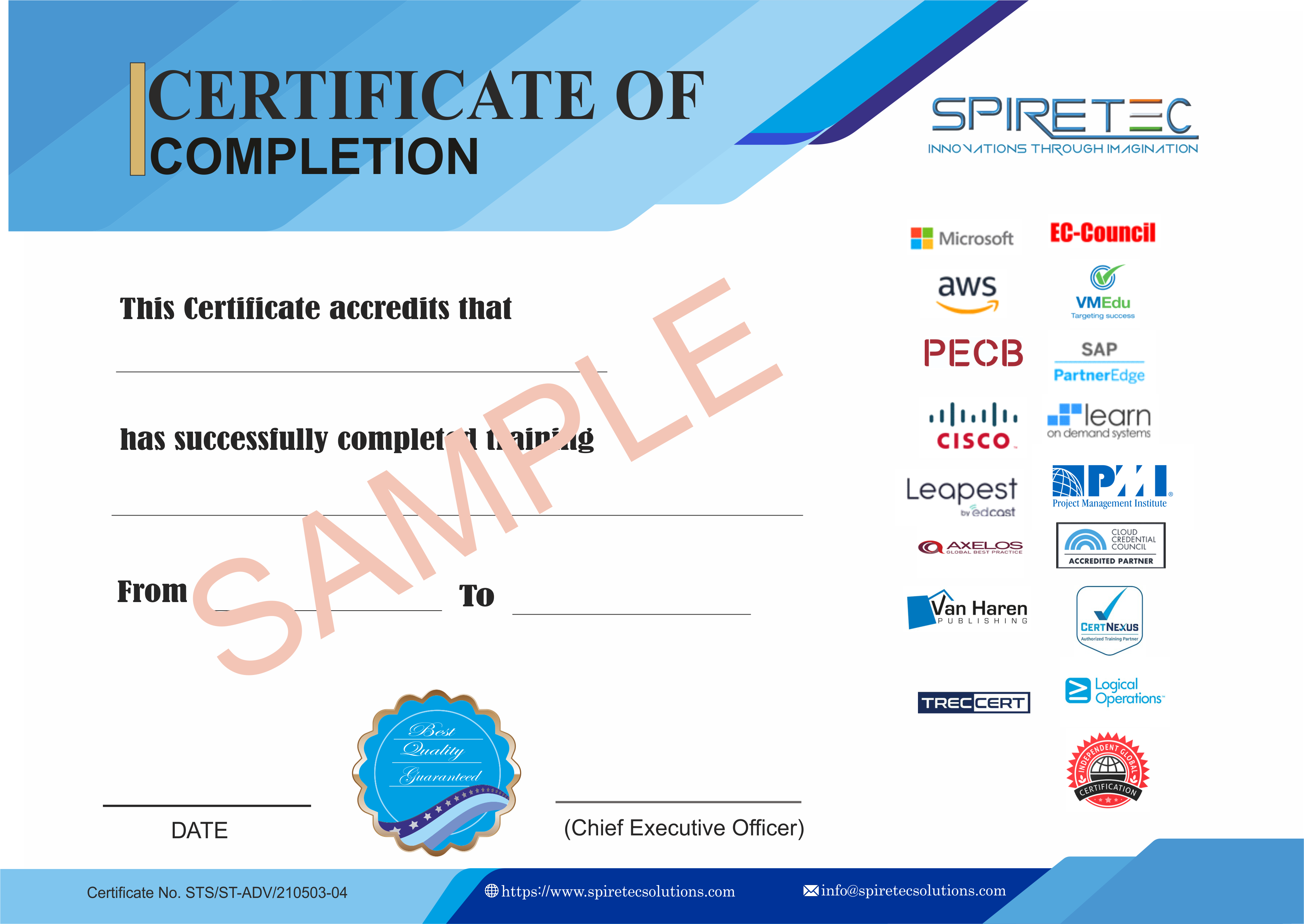The 55304 : Microsoft Dataverse for Teams course will guide students through designing low-code applications, automated processes, and chatbots directly in Microsoft Teams by leveraging Microsoft Dataverse for Teams and how to use further tools to design reports. This course is focused on end users, rather than administrators, who are looking to create new ways of working that are consumed within Microsoft Teams which is included in the cost of existing Teams user licenses and additional licensed services.
Audience Profile:
This course is intended for information workers who wish to create new chatbots, apps, reports, and flows to enhance their audience's experience in Microsoft Teams by leveraging Microsoft Dataverse for Teams and its low-code environment to serve a range of business scenarios.
At Course Completion:
After completing this course, students will be able to:
-
Understand the tools available within Microsoft Dataverse for Teams and their limitations.
-
Configure Microsoft Dataverse for Teams tables to formalize your data.
-
Design and publish apps that integrate with Microsoft Dataverse for Teams.
-
Create, check, and release chatbots that can leverage data from Microsoft Dataverse for Teams to create automated chat experiences.
-
Design, test, and deploy business processes that integrate with Microsoft Dataverse for Teams to query and update records.
-
Leverage data to create informative and engaging reports.
Prerequisites:
Course Outline:
Module 1: Installing, Upgrading, and Migrating to Windows 7
Description:
This module introduces students to Microsoft Dataverse, including its two offerings: the comprehensive Dataverse service and the free Microsoft Dataverse for Teams, which is integrated into Microsoft Teams. Students will learn about the differences, limitations, and use cases for both services, as well as how to leverage Microsoft Dataverse for Teams with various Power Platform tools.
Lessons:
-
Microsoft Dataverse
-
What is the Power Platform?
-
Licensing for Microsoft Dataverse
-
Licensing for the Power Platform
-
What is Microsoft Dataverse for Teams?
-
Database terminology
-
Chatbots, apps, and flows
-
Usage scenarios and limitations
-
Power BI in Microsoft Teams
-
An overview of Microsoft Teams
-
Where can you use Microsoft Teams?
-
The desktop app interface
-
Pinning apps in Microsoft Teams
Lab 1: Getting Ready
Learning Outcomes:
-
Understand what Microsoft Dataverse for Teams is.
-
Describe the limitations of Microsoft Dataverse for Teams.
-
Explain what an app, chatbot, and a flow are in the context of a Team.
-
Navigate Microsoft Teams and pin apps.
Module 2: Setting Up Tables
Description:
This module covers how to set up tables in Microsoft Dataverse for Teams. Each Team has its environment for designing a database with tables, columns, rows, views, and relationships to model data effectively.
Lessons:
-
Getting started with tables
-
Creating an environment for a Team
-
Creating a new table
-
Table settings
-
Adding columns
-
Choice columns
-
Adding rows of data
-
Creating table relationships
-
Designing new views
-
Table security
-
Deleting tables
Lab 1: Create Tables and Relationships
Learning Outcomes:
-
Understand environments for Teams.
-
Structure data effectively using tables.
-
Set up relationships between tables.
-
Create views for filtering content.
Module 3: Creating New Apps
Description:
This module introduces Power Apps within Microsoft Teams, focusing on designing interfaces for Team members to add data to tables. Students will learn to create apps from samples or from scratch.
Lessons:
-
An introduction to Power Apps
-
Power Apps services
-
The Power Apps interface
-
Creating a new app from a sample
-
Create a blank app
-
Working with screens
-
Connecting to data sources
-
Adding and editing controls
-
Introducing formulas
-
Using variables
-
Media
-
Testing an app
-
App settings
-
Publish to Teams
-
Broad distribution apps
Lab 1: Create a New App
Learning Outcomes:
-
Know where to start designing an app.
-
Understand how to connect to data sources.
-
Know when to use specific controls in an app.
-
Understand formula syntax and when to use variables.
-
Test and publish an app.
Module 4: Designing Chatbots
Description:
This module covers using Power Virtual Agents to design chatbots within Microsoft Teams. Students will learn to create, implement logic, test, and publish chatbots.
Lessons:
-
An introduction to Power Virtual Agents
-
Chatbot topics
-
How do chatbots work in Teams?
-
The Power Virtual Agents interface
-
The authoring canvas
-
Entities
-
Creating a new chatbot
-
Working with topics
-
Setting up triggers
-
Adding nodes
-
Call a flow
-
Testing your chatbot
-
Publish a chatbot
-
Using a chatbot in Microsoft Teams
-
Maintaining a chatbot
Lab 1: Create a Chatbot
-
Create a new chatbot
-
Design a topic
-
Add an entity
-
Work with nodes
-
Test your chatbot
-
Publish your chatbot
Learning Outcomes:
-
Create a new chatbot within Teams.
-
Use the authoring canvas to create a conversation.
-
Test a chatbot.
-
Publish a chatbot to a Team.
Module 5: Adding Automated Processes
Description:
This module introduces Power Automate in Teams, allowing users to create business processes that integrate features from Microsoft 365 and Microsoft Dataverse for Teams.
Lessons:
-
An introduction to Power Automate
-
How does Power Automate help Microsoft Teams users?
-
Configuring Microsoft Teams flows
-
Testing a flow
-
Designing new flows or customizing flows
-
The Power Automate interface
-
Working with actions
-
Branching logic
-
Connect a flow to Dataverse for Teams
-
Expressions and variables
-
Publish a flow
-
Flow history and error resolution
Lab 1: Create a New Flow
-
Create a new Microsoft Team flow
-
Test the flow
-
Modify the flow in Power Automate
-
Publish and test your changes
Learning Outcomes:
-
Understand when and how to add Microsoft Teams flows.
-
Recognize when a flow needs customization and how to make changes.
-
Implement branching logic within the flow.
-
Connect a flow to tables in your environment.
-
Thoroughly test a flow and review workflow history.
Module 6: Designing Reports
Description:
This module discusses how to connect Microsoft Dataverse for Teams with Power BI Desktop to create reports that visualize the data stored in tables.
Lessons:
-
An introduction to Power BI
-
The Power BI suite
-
User-based licensing
-
Premium capacity workspaces
-
Connecting to tables
-
Queries and data modeling
-
Designing reports
-
Hide and rename columns
-
Adding basic content
-
Visualizations
-
Publishing reports
-
Scheduling a data refresh
-
Share in Teams
Lab 1: Connect a Chatbot to a Table Using Flow
-
Design a new flow to access a table
-
Update a topic and add your flow
-
Complete the remaining topic notes
-
Test your enhanced bot and publish
-
Explore Power BI Desktop
Learning Outcomes:
-
Understand Power BI as a service and its tools.
-
Explain the licensing required for Power BI within an organization.
-
Demonstrate how to connect to tables in Microsoft Dataverse for Teams using Power BI Desktop.
-
Design reports using tables and columns from Microsoft Dataverse for Teams.
-
Adhere to best practices in reporting.
-
Confidently publish and schedule reports and share them with colleagues.







 Live Online Training (Duration : 16 Hours)
Live Online Training (Duration : 16 Hours)
